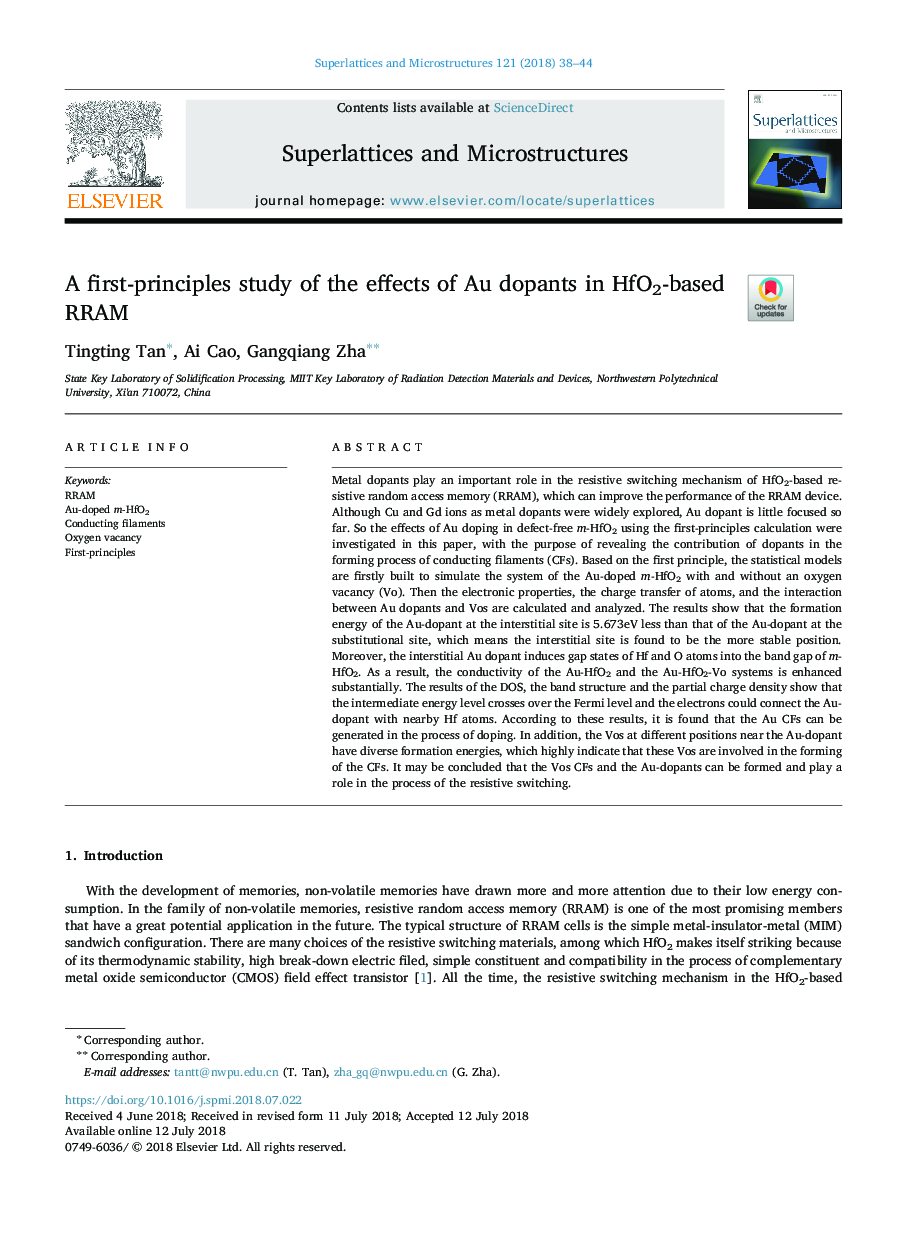| Article ID | Journal | Published Year | Pages | File Type |
|---|---|---|---|---|
| 7938426 | Superlattices and Microstructures | 2018 | 7 Pages |
Abstract
Metal dopants play an important role in the resistive switching mechanism of HfO2-based resistive random access memory (RRAM), which can improve the performance of the RRAM device. Although Cu and Gd ions as metal dopants were widely explored, Au dopant is little focused so far. So the effects of Au doping in defect-free m-HfO2 using the first-principles calculation were investigated in this paper, with the purpose of revealing the contribution of dopants in the forming process of conducting filaments (CFs). Based on the first principle, the statistical models are firstly built to simulate the system of the Au-doped m-HfO2 with and without an oxygen vacancy (Vo). Then the electronic properties, the charge transfer of atoms, and the interaction between Au dopants and Vos are calculated and analyzed. The results show that the formation energy of the Au-dopant at the interstitial site is 5.673eV less than that of the Au-dopant at the substitutional site, which means the interstitial site is found to be the more stable position. Moreover, the interstitial Au dopant induces gap states of Hf and O atoms into the band gap of m-HfO2. As a result, the conductivity of the Au-HfO2 and the Au-HfO2-Vo systems is enhanced substantially. The results of the DOS, the band structure and the partial charge density show that the intermediate energy level crosses over the Fermi level and the electrons could connect the Au-dopant with nearby Hf atoms. According to these results, it is found that the Au CFs can be generated in the process of doping. In addition, the Vos at different positions near the Au-dopant have diverse formation energies, which highly indicate that these Vos are involved in the forming of the CFs. It may be concluded that the Vos CFs and the Au-dopants can be formed and play a role in the process of the resistive switching.
Related Topics
Physical Sciences and Engineering
Materials Science
Electronic, Optical and Magnetic Materials
Authors
Tingting Tan, Ai Cao, Gangqiang Zha,
